Yosemite National Park is a photographer’s paradise, boasting iconic granite cliffs, cascading waterfalls, and serene valleys that have inspired generations of photographers and artists. Many of these classic Yosemite views are bucket list items for photographers, with additional hidden gems and lesser-known spots for unique photos of Yosemite.
Classic Yosemite Views
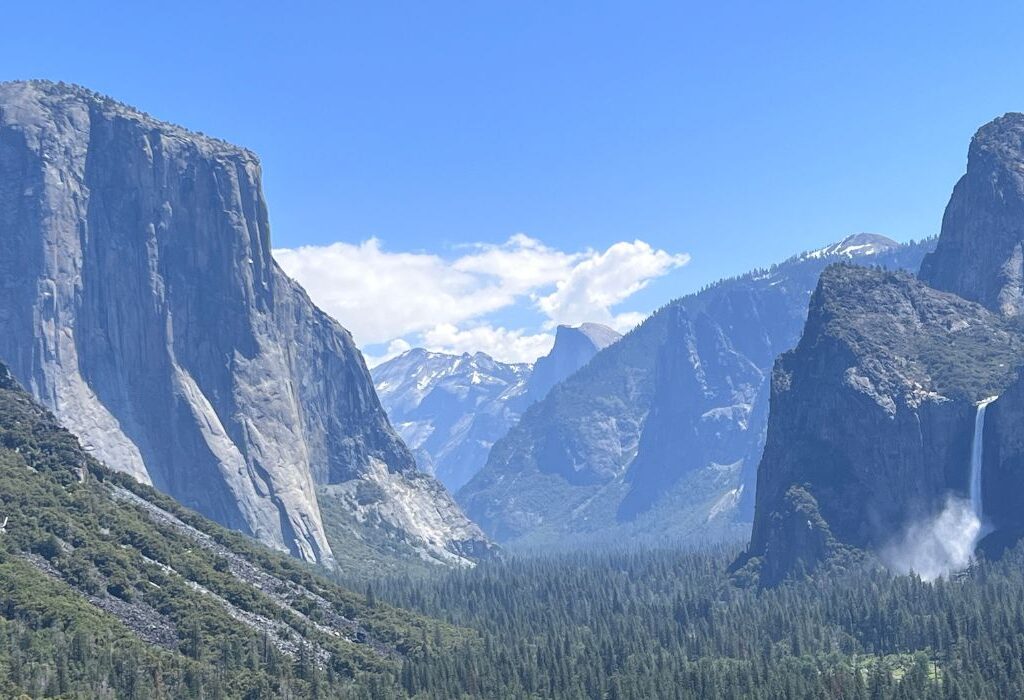
Tunnel View
Arguably the most famous viewpoint in Yosemite, Tunnel View is a hotspot for photographers and sunrise enthusiasts. As you emerge from Wawona Tunnel, a breathtaking panorama unfolds to reveal El Capitan’s granite majesty, graceful cascade of Bridalveil Fall, and iconic Half Dome rising in the distance. The best time to visit this photo spot in Yosemite is at sunrise or sunset, when lighting conditions are at their best with golden hues and stunning sunrays. Arrive early to get the best view – this popular spot sees hundreds of visitors daily.
Local Tip: For a unique shot, hike the short trail to Inspiration Point just above Tunnel View. This elevated vantage point is where Ansel Adams captured one of the most popular photos of Yosemite ever, Clearing Winter Storm, in around 1937!
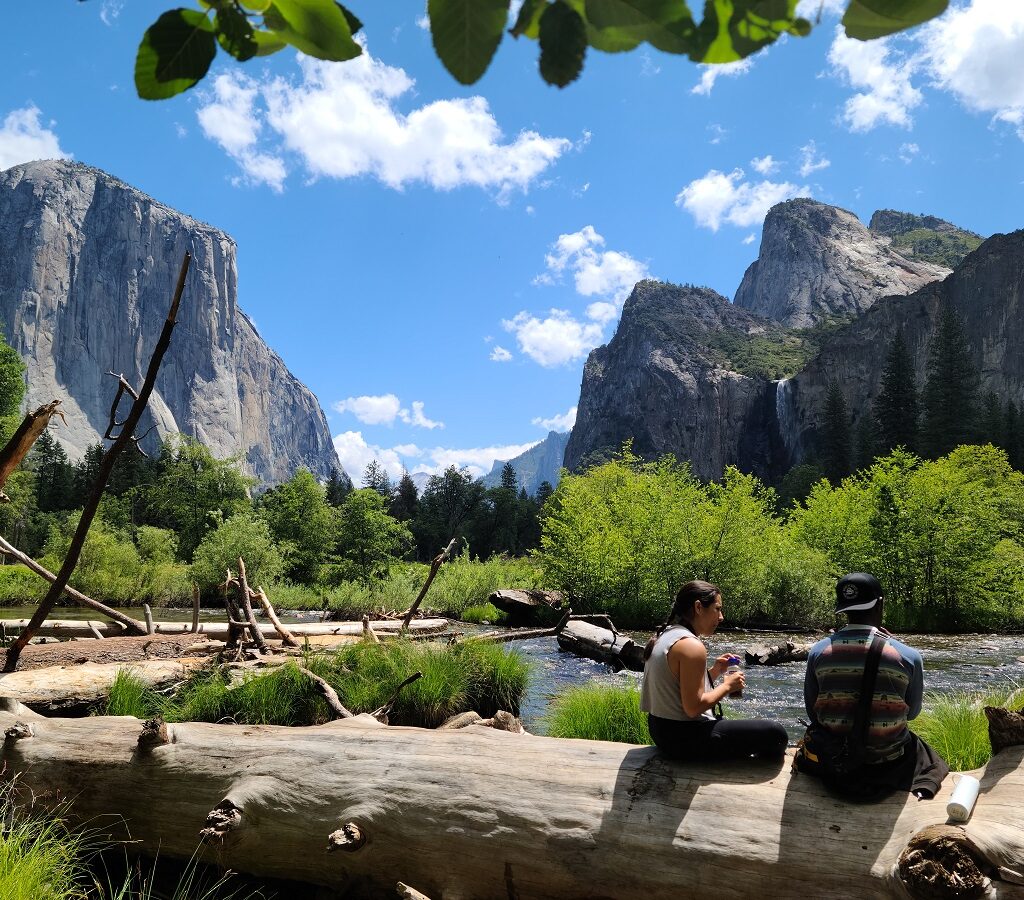
Valley View
Valley View offers a unique setup that showcases El Capitan, the Merced River, and Bridalveil Fall in a single frame. This area is especially magical during spring and early summer, when the river is rushing at full capacity and waterfalls flow at their incredible peak due to snowmelt. Most photographers opt for a wide-angle lens at this Yosemite photo spot to capture as much of this iconic view as possible.
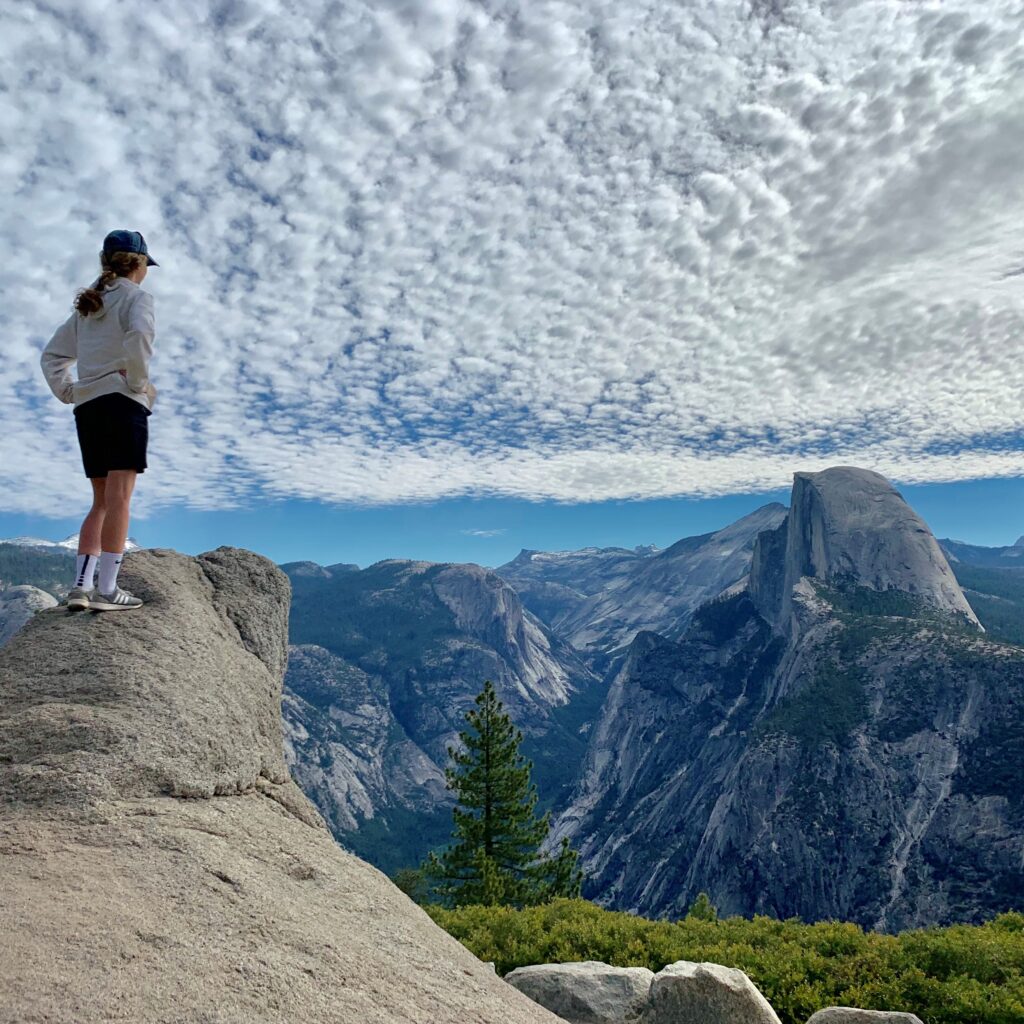
Glacier Point
3,214 feet above Yosemite Valley, Glacier Point offers stunning vista views that encompass Half Dome, Yosemite Falls, and an expanse of the valley floor. Accessible by car and a short walk, Glacier Point rewards adventurers with panoramic views of Yosemite Valley below and all of the High Sierra peaks as far as the eye can see. Sunrise and sunset are the most popular times to photograph Glacier Point, as the warm light illuminates Half Dome for a breathtaking focal point. While wide angle shots encompass the whole scene, don’t forget about the magic of details – zoom in on Vernal Fall, an iconic waterfall visible from Glacier Point.
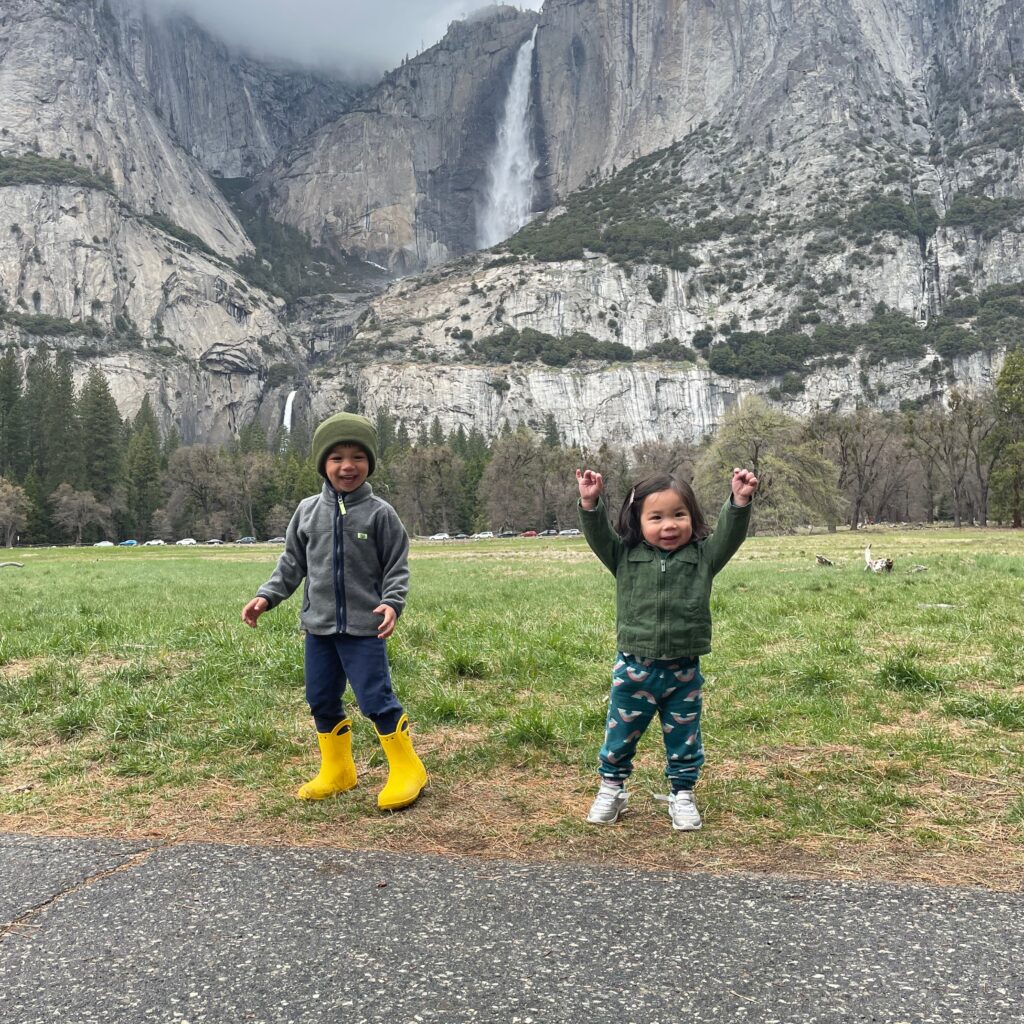
Yosemite Falls
Say hello to North America’s tallest waterfall, Yosemite Falls. The falls consist of three distinct sections: Upper Yosemite Fall, the Middle Cascades, and Lower Yosemite Fall. These three waterfalls combine to create a powerful display of nature’s beauty. Increased water flow in the spring and early summer add to the drama, often accompanied by rainbows dancing in the mist of the falls. And be on the lookout for Moonbows. Under full moon skies, Moonbows are rainbows created by the light of the moon against the waterfall.
Hidden Gems and Lesser-Known Spots

Taft Point
The dramatic cliffside viewpoint at Taft Point offers breathtaking views of El Capitan, Yosemite Falls, and the vast Yosemite Valley. The out-and-back hike to reach Taft Point is relatively easy and accessible for most photographers of all levels. For optimal lighting, photographers usually choose sunrise or sunset to photograph Taft Point. Golden hour casts a magical glow on El Capitan, creating a truly stunning Yosemite photo opportunity.
Sentinel Dome
This granite dome offers a 360-degree panoramic view of Yosemite Valley, including Half Dome, El Capitan, and the surrounding peaks. The hike to the top can be a challenge, but the view from the summit is worth the effort! Sunrise and sunset are the most magical times to visit Sentinel Dome, with dramatic shadows cast by Half Dome and other landscape elements creating interesting photo opportunities.
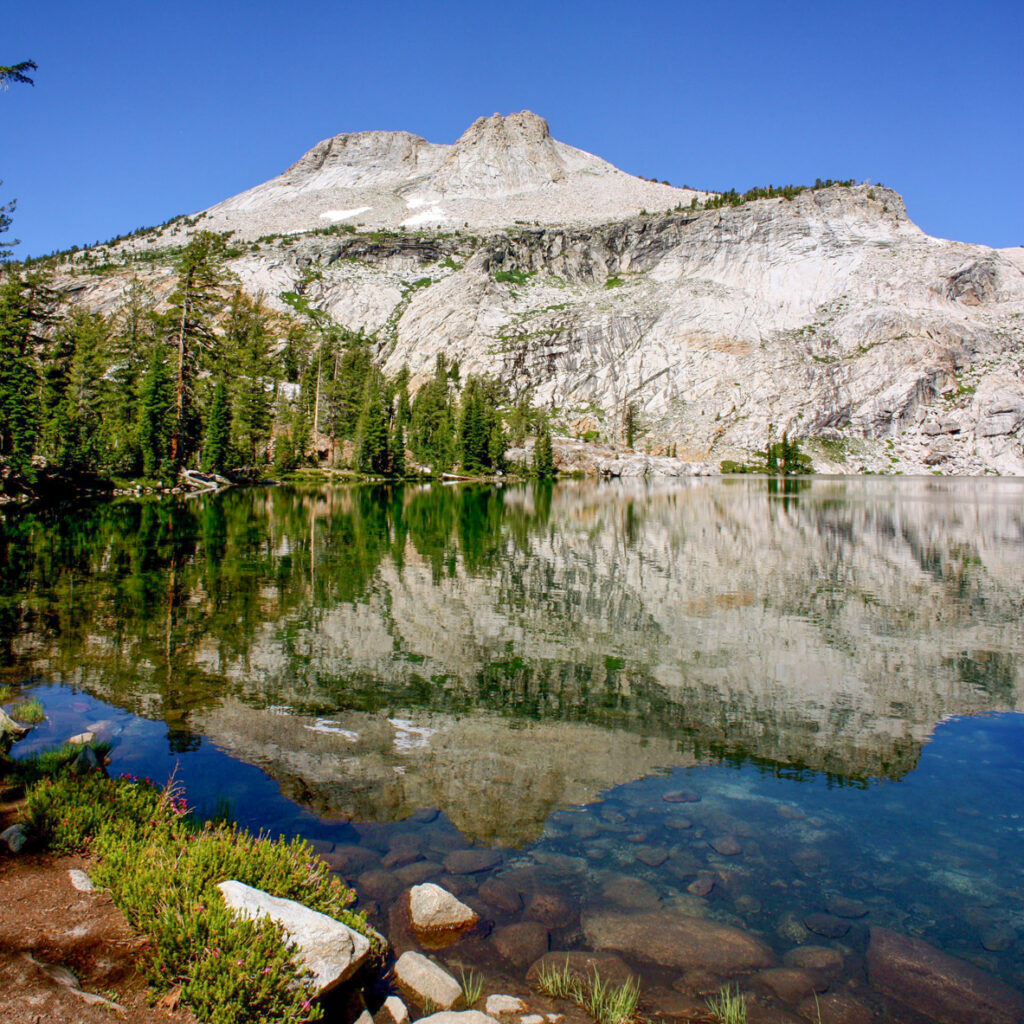
May Lake
For a serene escape from the crowds, visit lesser-known May Lake, a picturesque alpine lake at the base of Mount Hoffman. The tranquility of the lake and the stunning mountain views make it a worthwhile destination for photographers. The best time to photograph May Lake is during the golden hour, when the warm light reflects off the water and illuminates Mount Hoffmann.
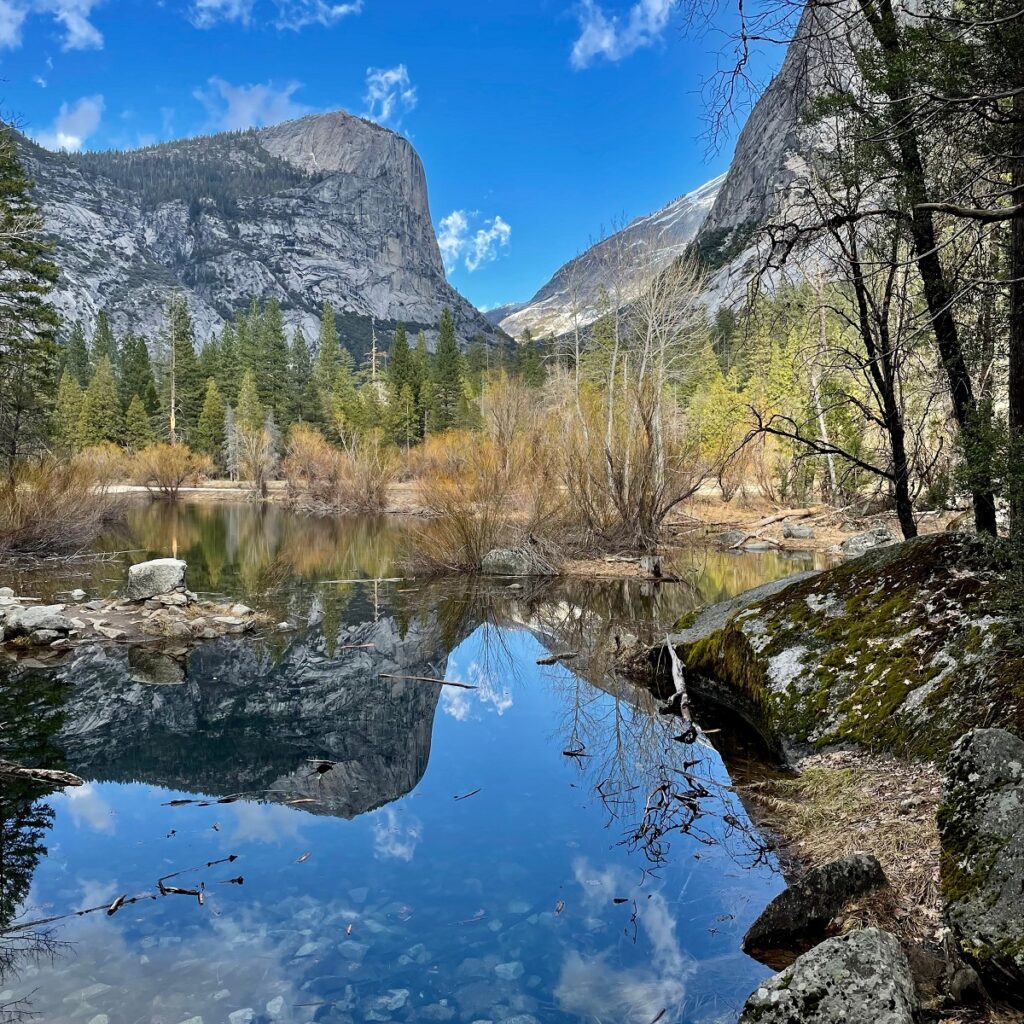
Mirror Lake
Mirror Lake, located at the base of Half Dome, is a popular destination for photographers and nature lovers alike. The lake offers stunning reflections of Half Dome and the surrounding cliffs, especially during the early morning hours. To access Mirror Lake, you can either walk or bike along a relatively flat trail. The best time to photograph Mirror Lake is during sunrise, when the water is calm and the reflections are most vivid. Visit Mirror Lake in spring for bright wildflowers, and in autumn for beautiful fall foliage. Mirror Lake turns into a verdant meadow every summer, then the lake naturally refills each winter, making for particularly stunning light and texture when Half Dome reflects on the icy waters.
Seasonal Highlights
Spring
The best photo opportunities in Yosemite in spring are the park’s waterfalls and wildflowers. Yosemite Falls, Bridalveil Fall, Vernal, and Nevada Falls all rush at their majestic peak capacity in early spring as snow melts and fills the streams and rivers.
Summer
The best photo opportunities in Yosemite in summer are the bright and beautiful alpine wildflowers. These pretty pops of color are most often photographed in Tuolumne Meadows, alongside lush greenery and sparkling high country lakes.
Fall
All of the viewpoints and trails in Yosemite treat visitors to shows of seasonal fall colors in the park, but an especially popular area for photographing fall foliage is the Glacier Point Road area. Photographers love the golden light that fall brings to Yosemite, with thousands flocking to the park annually to capture the changing fall foliage through their lens.
Winter
While Yosemite’s main attraction in the winter is the snow-covered landscapes, there is a fleeting and sought-after phenomenon in late February called Firefall that hundreds of photographers gather to experience. This miraculous show of light occurs when evening sun hits Horsetail Fall just right, giving the fall a molten orange glow that resembles a splashing stream of fire falling through the air. Learn more about Firefall here.
Whether you’re chasing waterfalls in the spring, capturing the vibrant wildflowers in summer, marveling at the rare fiery hues of Firefall, or embracing the tranquil beauty of winter landscapes, Yosemite offers endless opportunities to create stunning photographs that will last a lifetime. Book your stay at a Yosemite hotel and pack your gear for the photography trip of a lifetime!

